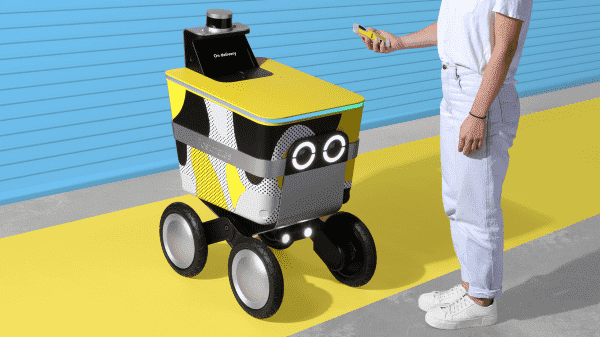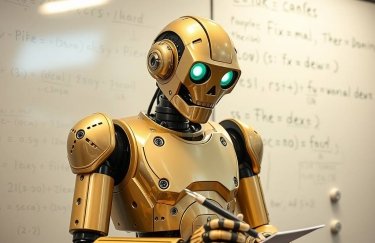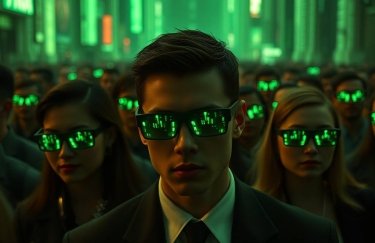

If you were asked to draw an eyeball in 10 seconds or less, you would probably draw something that looks like it could be glued onto an elementary school craft project. Maybe, if you are gifted, your eyeball would look like it belonged on the face of a Pixar character. Either way, you would most likely draw an eye that looks like it could belong to one of several new robots announced in the last two weeks by major companies.
For example, Samsung’s Bot Air: a robot with friendly cartoon eyes that purifies the air in your home, announced at the Consumer Electronics Showcase earlier this month. And Samsung’s Bot Care, which will tell you to take your medicine and track your sleep, part of a line of “companions of the future” using Samsung’s Bixby AI platform.
Take Marty, the robot rolling out in Giant grocery stores nationwide and coming soon to Stop & Shop. In a remarkable introduction in the Washington Post, Peter Holly writes, “Tall, slow-moving and gray, he has big cartoonish eyes that disguise something unique about the newest employee at Giant Food Stores: Marty is deliberate and relentless, and — unlike his fellow employees — he has the ability to work a seemingly endless number of hours without pay.” Also, Marty’s eyes do not appear to be functional. They are plastic googly eyes — otherwise known as ”adhesive wiggle eyes” — simple and non-threatening. (You can buy 50,000 of them for $824 on the Michael’s website, which doesn’t sound like a bad deal.) Marty will “report spills, debris and other potential hazards to store employees,” as well as check inventory, but those eyes will not facilitate any of it. It seems he’s going to assist in the automation of hundreds of millions of jobs predicted to happen in the next 10 years, but for now, he does very little and customers love to take selfies with him. Because of his eyes.
Another example! Serve, Postmates’ new carefully designed and user-tested delivery robot, can “see” through it’s perfectly round cartoon eyes, enabling it to jump over curbs, one of the many delightful quirks of its “personality,” which is supposed to mimic the charming imperfection of Pixar’s Wall-E (the little robot left to clean up the Earth after we destroy it). Serve was made in collaboration with Postmates’ in-house R&D lab and San Francisco’s NewDealDesign. “Ideally, we want this robot to be the emoji of robot delivery,” NewDealDesign founder Gadi Amit told Fast Company. “Our goal was to change hearts and minds on first sight,” said Ali Kashani of Postmates.
Amit also explained the eyes, saying, “Those eyes you see in the front are actually two very good cameras creating a stereoscopic view. The eyes were there functionally first, then we decided to enhance them in the design.”
Okay, but that doesn’t explain why they are cartoony. Why so cute, hm? Why do we love robots, and must we?
In 2014, The Verge’s Josh Dzieza investigated what he called “the rise of the adorable machines.” First, he spoke to the creators of Hitchbot, a hitchhiking robot with a cute emoji face. Hitchbot was ultimately beheaded in Philadelphia but was, for a while, helped along on its journey by friendly strangers. It had bright yellow boots and was sort of bad at moving, which made people want to help it out. Bumbling objects with big eyes just seem baby-adjacent.
“Cuteness can earn people’s trust,” Dzieza wrote. “It can mean the difference between affection and horror. It can set the tone for entire interactions, subconsciously setting people up to be more forgiving of errors, and even convincing them to help the bot do things it can’t yet do.”
The more cute robots he met, the more the eyes emerged as a theme. Baxter, a robot designed to assist human factory workers, also had “big, emotive cartoon eyes.” Google’s self-driving car had eye-like headlights.
Eyes are not always cute, we know. Sometimes they are for Halloween, or part of a violent threat. But when they are big and do not look to have been ripped out of their sockets, they are charming. They remind us of infants even when they are on large mammalian predators that can hurt us very badly, so why not when they appear on robots? “It was the eyes that got me,” reporter David Pierce writes at the beginning of a more recent Wall Street Journal report on the “cute” robot revolution.
Natalie Angier, surveying the field of research on “cuteness,” wrote for the New York Times in 2006, “The human cuteness detector is set at such a low bar … that it sweeps in and deems cute practically anything remotely resembling a human baby or a part thereof,” which begins to explain why googly eyes work for us. But if you stared into Marty’s stick-on eyes and felt at first charmed, and second, a repulsion at your own instinct, there’s an explanation for that too: The famed, now-deceased art philosopher Denis Dutton told Angier at the time, “Cute cuts through all layers of meaning and says, ‘Let’s not worry about complexities, just love me.’ That’s where the sense of cheapness can come from, and the feeling of being manipulated or taken for a sucker that leads many to reject cuteness as low or shallow.”
“Cute cuts through all layers of meaning and says, ‘Let’s not worry about complexities, just love me’”
But, in 2017, a research team of scientists from Cornell University and the Media Innovation Lab at IDC Herzliya in Israel threw a bit of a wrench in the cute robot narrative more broadly. Before their research, it was accepted that the most seamless way to introduce humans to a world of robots was to make the robot act human, and to give it a face that was endearing because of hard-wired evolutionary schema in the brain. But the researchers found that people reacted to robots as if they were people even when they were extremely minimalist, and their gestures as simple as a traffic light:
Cuteness goes deeper than facial features, it turns out. Nicole Mirnig and a team of scientists at the Center for Human-Computer Interaction in Salzburg, Austria, have found that we like when robots mess up, because it reminds us of mostly reliable human beings who are still not perfect — our favorite kind. From a design perspective, this is a useful trick to play on human feeling, and the robots of the future will likely be specifically programmed to make tiny errors and require our help. That’s why you might find your Roomba lovable, though it has no googly eyes or human-esque features. It’s just a little screw-up, so helpless, and it needs you. It’s stuck in the corner again.
All this to say that there is, unfortunately, no way to make a robot that is not emotionally dangerous, as we want to be tender toward absolutely everything. That’s nice to know about us humans, I suppose, though it is not so reassuring when I imagine a blogging Marty sitting at my desk, rolling his stupid eyes around, charming my coworkers into not even missing me.
Sourse: vox.com






